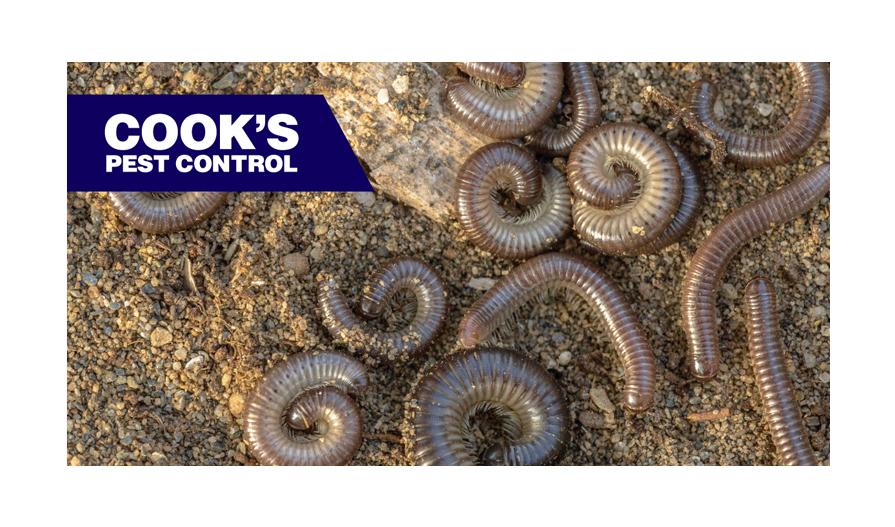Summer of the Millipede

With the heat of summer (and the drought that comes with it) to soon be upon us, several pests will begin to seek moisture and shelter from the elements. One such pest that could begin plaguing your home will be the millipede. Millipedes (Class: Diplopoda) can come in a variety of shapes and sizes, but all follow a basic segmented body plan of a head and an elongated and cylindrical trunk. The trunk is divided into many small consecutive segments, each with two pairs of legs. This differentiates them from centipedes, which have only one pair of legs per segment. Millipedes are typically slow moving arthropods that live in the soil, eating decaying plant matter.
Where to Find Millipedes
Since millipedes eat decaying plant matter, they generally live where it is found in abundance, such as the soils in gardens, however some species can graze on plants, damaging gardens. Millipedes require high moisture levels in their environment. Therefore, they will generally occur in areas that will hold moisture, such as mulch beds, or under concrete. If a customer is experiencing millipede problems in their yard or garden, attempt to dry the area out and tell them to avoid watering if possible. Millipedes generally will not last long inside of a home or structure, as it is too dry for them and they will quickly desiccate. If a heavy millipede infestation is in a customer’s home, there are likely millipedes breeding in their lawn or under mulch, leaf litter or debris near their foundation. Preventing millipedes from entering the home is the best approach to millipede control. Michael F. Potter, extension entomologist at the University of Kentucky College of Agriculture, says to remove mulch, leaves, grass clippings, boards or woodpiles, stones, boxes and similar items that are on the ground next to the foundation, as these items attract millipedes. If an item cannot be moved, then simply raise it off the ground. Millipedes also thrive in the moist thatch layer of poorly maintained lawns. Applying insecticide along the interior foundation walls of the damp crawl space or unfinished basement may also help with millipede control. Millipedes can only live for a few days in the dryness of a house, so a millipede infestation will be short-lived. Millipedes are typically harmless and do not bite; however, some species can secrete an irritant from the pores along their body if they are disturbed. Although this secretion will typically only discolor the skin, it can cause an unpleasant reaction if it gets into your mouth or eyes. Be sure to wash your hands thoroughly with soap and water if you come into contact with millipedes.
I hope that a few of these tips will prove beneficial if you end up battling a millipede infestation.
